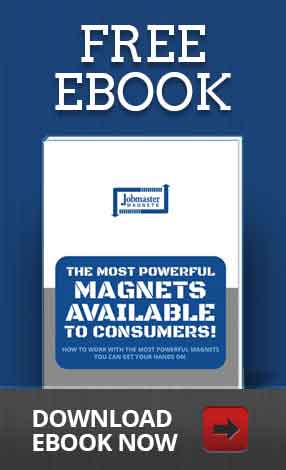Neodymium iron boron magnets are not immune to heat. The technical data recommends a maximum operating temperature, but that maximum operating temperature is specific to the geometry of the magnet.
It is not a strict number and will change with the magnetic circuit in which the magnet is operating.
This maximum operating temperature is important, but it’s the point beyond which the magnet will experience irreversible loss in magnetization. In all actuality, a magnet will lose magnetization as soon as it begins heating up. This loss is considered reversible, because it’s recovered as the magnet cools.
Continue reading to get a deeper understanding of how heat affects magnetic holding power and greater knowledge for your magnet purchase.
The impact of reversible loss
At first glance, irreversible loss appears to be the more significant issue. However, reversible loss can cause a negative impact on magnet performance because the magnetic field diminishes during the application.
The field, then, may not be enough for the desired application because of the heat.
So what are you telling me?
Let’s break this down to a series of straightforward points.
Here’s quick reference chart of basic materials and peak operating temperatures:
- Neodymium magnets: 120-160 C.
- Samarium Cobalt magnets : 200 C.
- Flexible magnets: 80-160 C.
- Ceramic ferrite: 450 C.
- Alnico magnets: 525C.
Although a selected grade of magnet might not experience an irreversible loss, it can still lose magnetic field when heated up – potentially enough field to impact the safety or other outcomes of your application.
- A magnet will recover its strength when cooled down, as long as it doesn’t cross the threshold of irreversible loss.
- Recoverable loss may cause a magnet to fail to deliver advertised strength at an elevated operating temperature.
- The Br can be used to estimate degradation for a specified temperature range. So if you know how hot your application will get, keep this in mind.
- Selecting a higher heat tolerance grade may not solve the problem of reversible field loss due to heat. A higher heat tolerance will mean the magnet won’t experience irreversible loss at higher temperatures, but doesn’t improve the recoverable loss threshold.
- Your solution may be in the magnetic geometry design or in trying a different alloy.
Bring your application to us and we can find you the right solution.
















